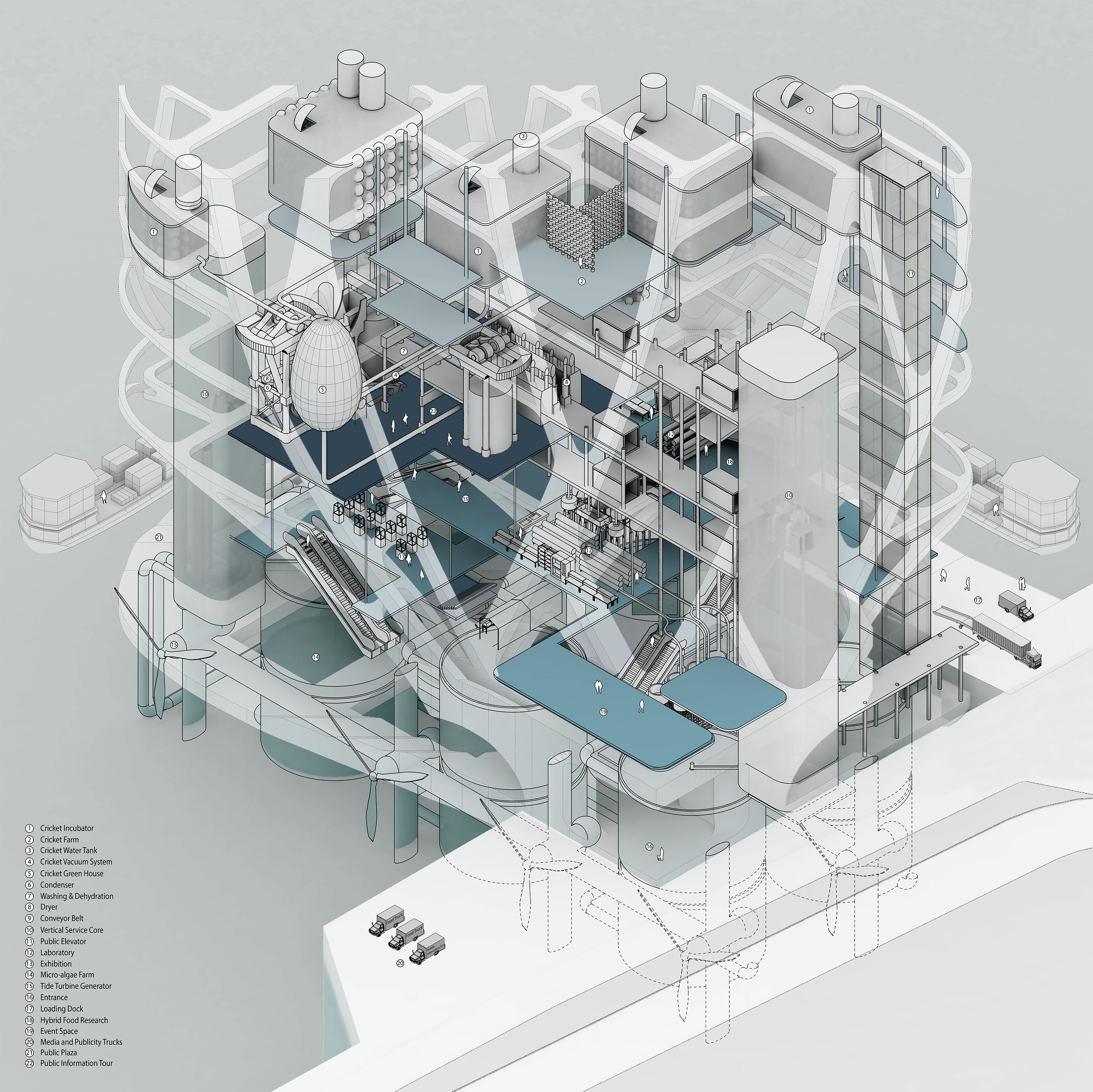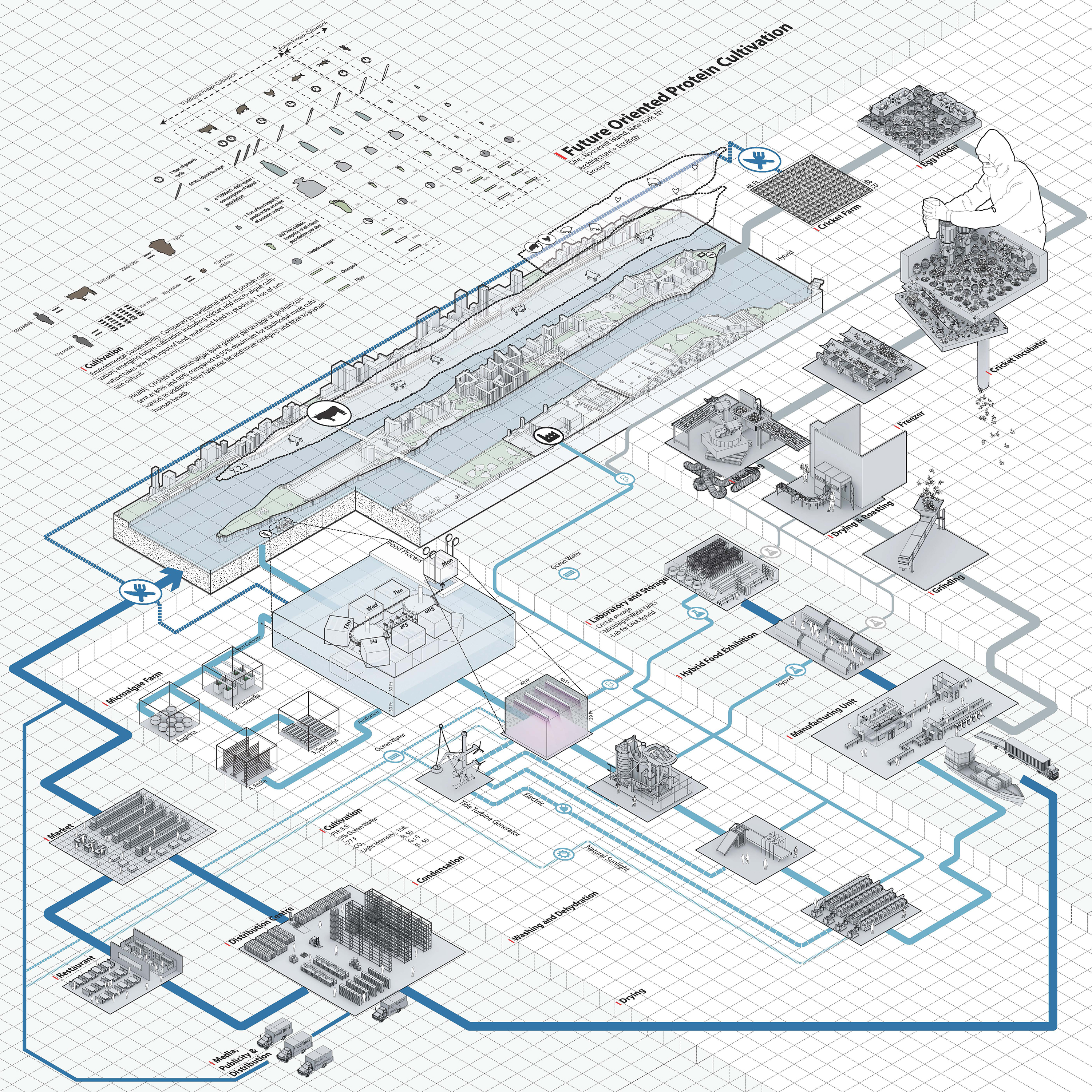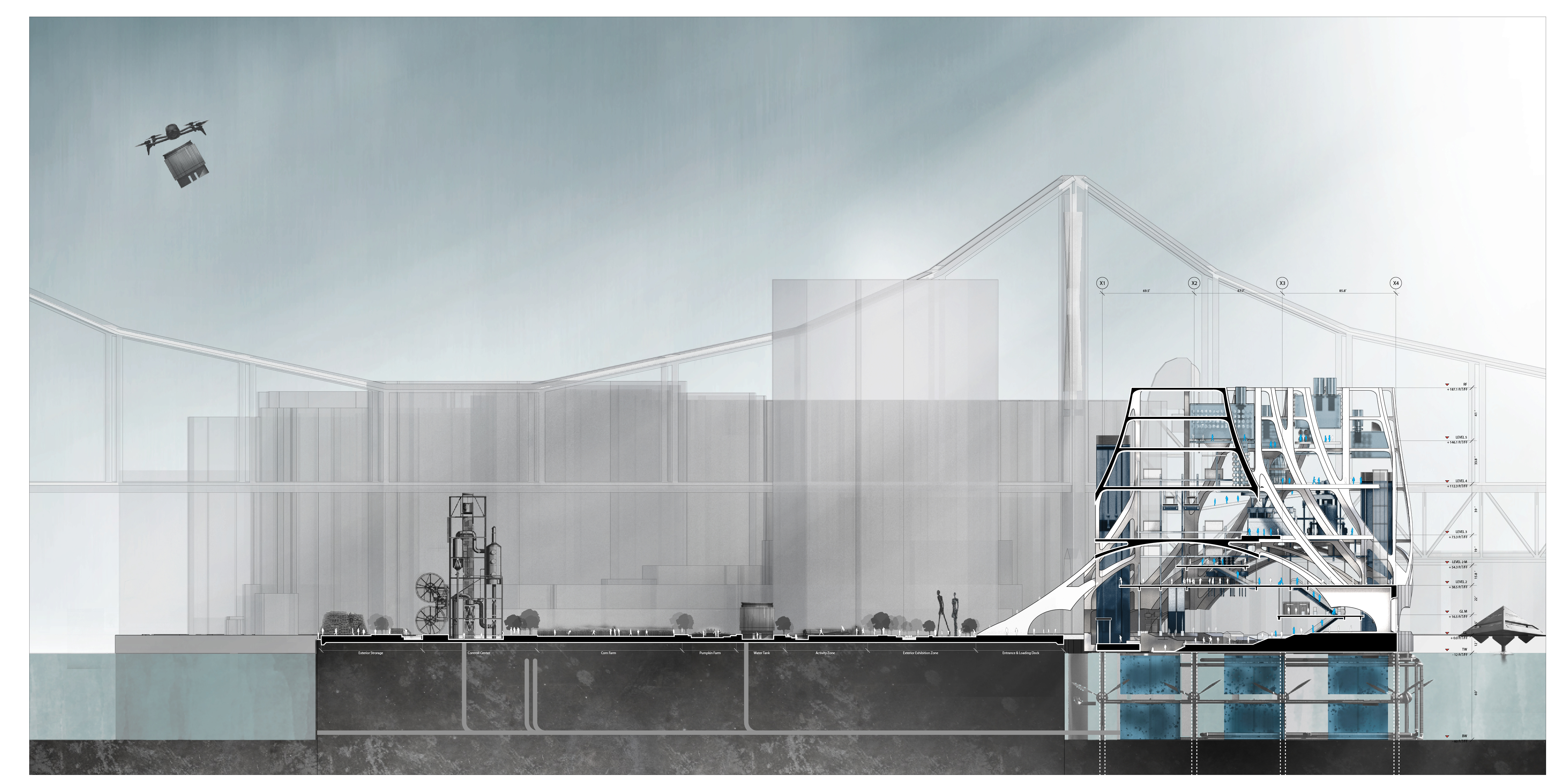Future Oriented Protein Cultivation
The
project proposes a futuristic protein factory (infrastructure) cultivating
cricket and micro-algae on Roosevelt Island, New York. Emerging protein like
cricket and micro-algae cultivation requires a much lower input of land, water,
and resources, Compared to traditional ways of
protein cultivation almost 70 times smaller - Moreover, Crickets and
micro-algae have a greater percentage of protein content than traditional meat
cultivation. The aim of the design was to develop an innovative mutualistic
system between architecture, infrastructure, and ecology. This novel hybrid
factory also alleviates the national pollution crisis and, finally, be
beneficial for ecological systems and human life in the future.
Cornell University Architecture, Art and Planning
Faculty: Tei Carpenter & Jesse LeCavalier
Team: Chang-Feng Lee. Seung Won Seo,
Jiayi Yi, Yihe Zhang, Mohammed Mansoor
Degree: M.S. AAD
Semester: Summer 2018
Duration: 2 Weeks
Software: Rhino, Vray, Photoshop, Illustrator
Site : Roosevelt Island, New York, NY
Type : Architecture + Ecology, Infrastructural
Symbiosis, Food Production system.
Cornell University Architecture, Art and Planning
Faculty: Tei Carpenter & Jesse LeCavalier
Team: Chang-Feng Lee. Seung Won Seo,
Jiayi Yi, Yihe Zhang, Mohammed Mansoor
Degree: M.S. AAD
Semester: Summer 2018
Duration: 2 Weeks
Software: Rhino, Vray, Photoshop, Illustrator
Site : Roosevelt Island, New York, NY
Type : Architecture + Ecology, Infrastructural
Symbiosis, Food Production system.



